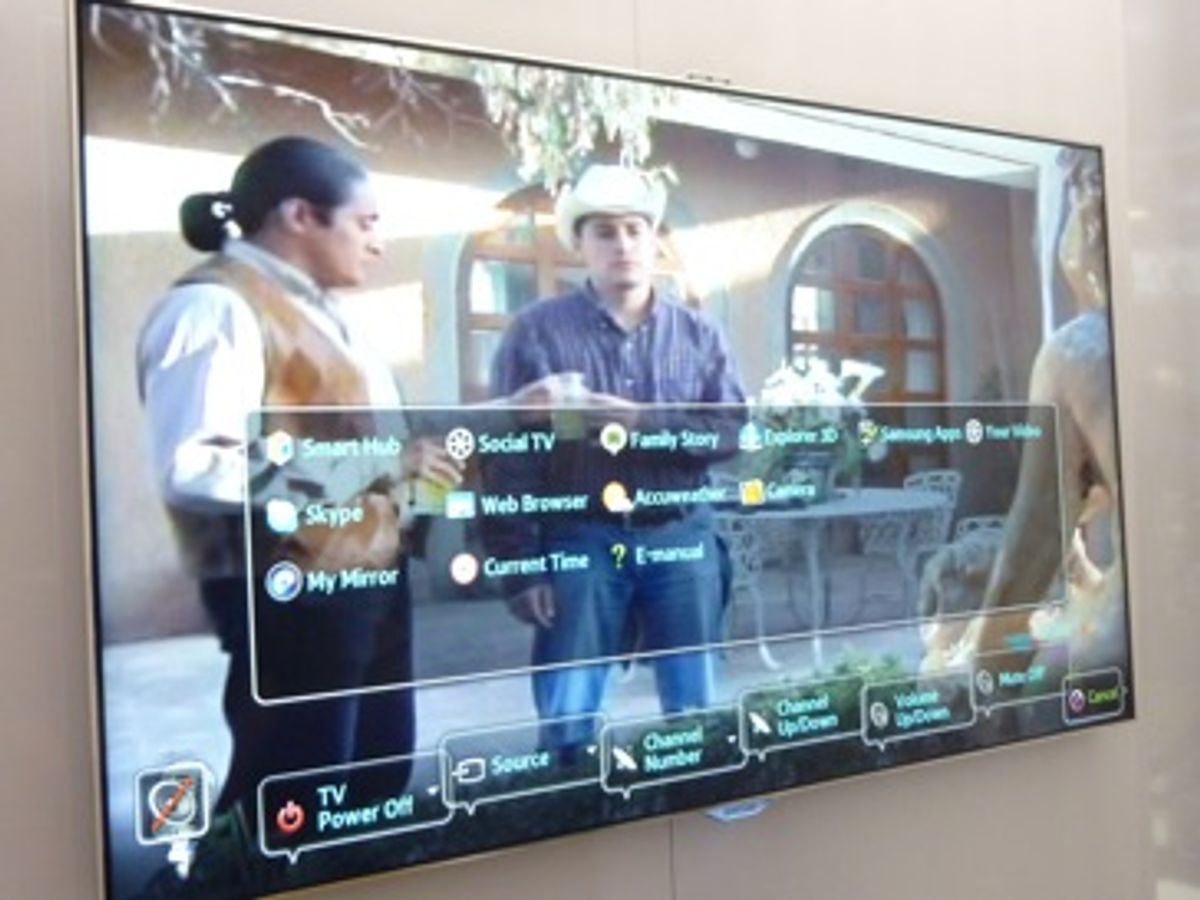For more news from CES, check out our complete coverage.
“Hello TV.”
That’s how my conversation started with Samsung’s voice and motion controlled television, being demonstrated at CES in Las Vegas this week. Several companies are previewing voice or gesture controlled televisions here at CES, including LG and Nuance; I got up close and personal with Samsung’s prototype.
Conversation starts with a trigger word or phrase that you can select (however, I can’t take credit for "Hello TV"; Samsung preselected that one for the demo). Speaking the trigger words brings up a menu on the bottom of the screen, simple voice commands let you perform different actions listed on the menu bar, like “Channel Up,” “Volume Down,” or “Mute” (I would have preferred “Be Quiet!” or “Shut Up”. The TV could only listen to one person at a time, get people talking over each other, and it simply stopped listening. And, to my disappointment, “Cancel” just turned off the voice command system; I had hoped it could be used to cancel, say, a channel-change request, otherwise, I fear it’s going to be way too easy for a kid to jump in and switch a channel when I’m in the middle of watching something. The system’s response to the voice command, even in a quiet room, felt a little sluggish—certainly standard remotes get quicker responses.
Samsung’s system also includes face recognition for, the company says, logging to personal Facebook and other accounts. It currently supports 23 languages (if you consider American, Australian, and British English different languages).
Is the TV remote headed for obsolescence? Probably not anytime soon, says Intel's Genevieve Bell, speaking on a panel on the future of user interfaces. Bell thinks we will have multiple forms of engagement with devices, depending on the function.
And, she points out, gesture interfaces have a ways to go on the road to maturity. “We need to develop a grammar, so the same gesture means the same thing across multiple devices.”
Ultimately, rather than the perfect interface emerging, user interfaces will simply all fade away as we use them less and less, and our smart devices simply anticipate, for example, that we want to watch news at 6 p.m. and set up the TV (and perhaps the temperature in the family room) automatically.
Update 1/16/12:
Softkinetic gesture interface speaks a different language
As I was wrapping up the week at CES, I did get an opportunity to check out a different motion control interface. As Intel’s Bell predicted, it spoke a far different gesture language. Softkinetic, from Belgium, has developed a gesture recognition platform it’s selling to TV and game manufacurers; the company says it has two as-yet-to-be-announced manufacturers signed on so far. Its language was as different from Samsung’s as French is from Korean. Instead of the “beauty-queen wave” and snapping your hand open and closed to communicate, Softkinetic’s gesture vocabulary is made up of sweeping, graceful arm motions, moves the company says is less tiring than sharp hand signals. (It certainly is prettier to watch.) Control transfers from one user to another when the first user drops his arm; the system can also lock into one dominant person based on the person’s location in the room or using facial recognition.
Follow me on Twitter @TeklaPerry
Tekla S. Perry is a senior editor at IEEE Spectrum. Based in Palo Alto, Calif., she's been covering the people, companies, and technology that make Silicon Valley a special place for more than 40 years. An IEEE member, she holds a bachelor's degree in journalism from Michigan State University.





